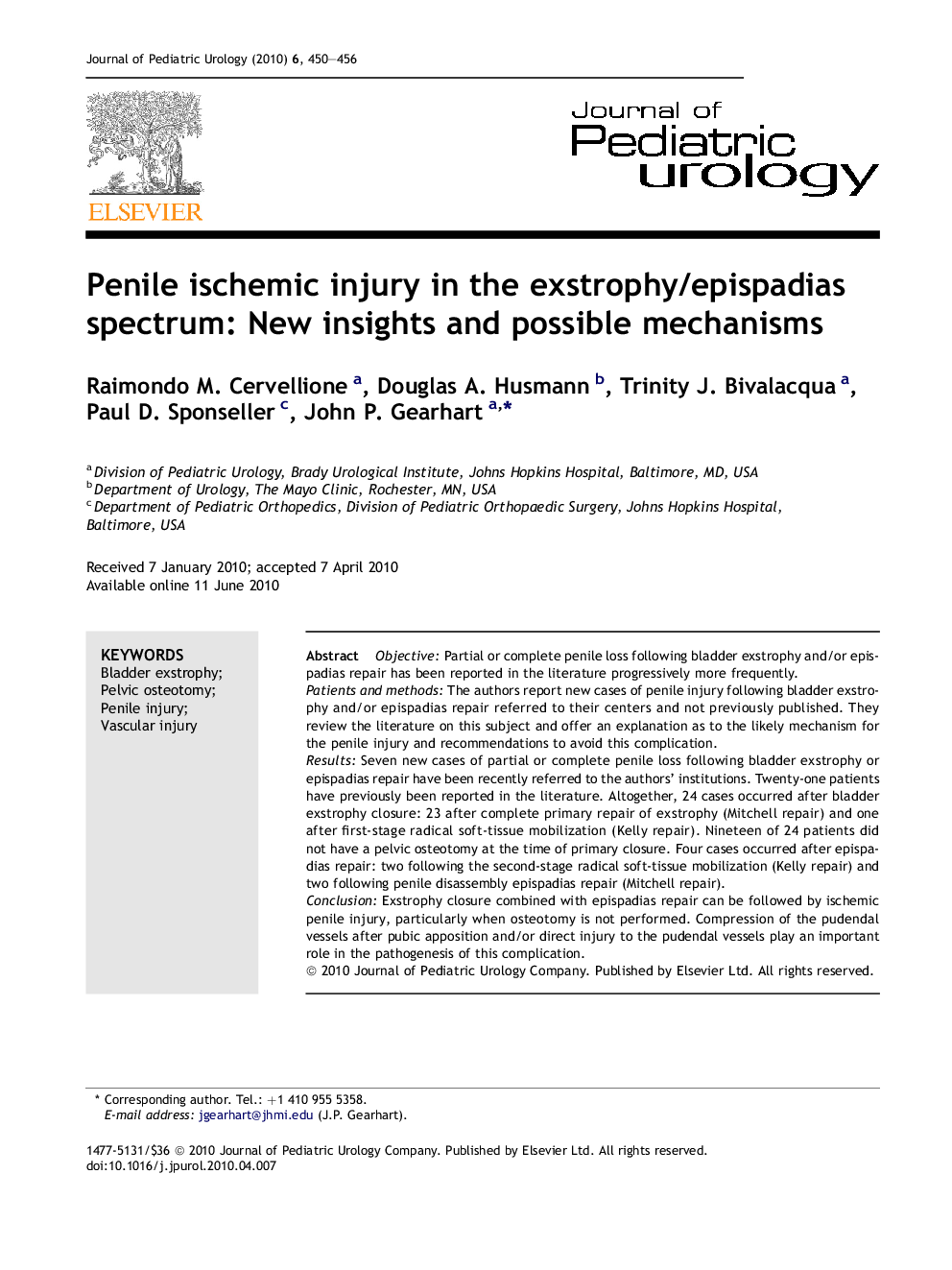| Article ID | Journal | Published Year | Pages | File Type |
|---|---|---|---|---|
| 4163156 | Journal of Pediatric Urology | 2010 | 7 Pages |
ObjectivePartial or complete penile loss following bladder exstrophy and/or epispadias repair has been reported in the literature progressively more frequently.Patients and methodsThe authors report new cases of penile injury following bladder exstrophy and/or epispadias repair referred to their centers and not previously published. They review the literature on this subject and offer an explanation as to the likely mechanism for the penile injury and recommendations to avoid this complication.ResultsSeven new cases of partial or complete penile loss following bladder exstrophy or epispadias repair have been recently referred to the authors’ institutions. Twenty-one patients have previously been reported in the literature. Altogether, 24 cases occurred after bladder exstrophy closure: 23 after complete primary repair of exstrophy (Mitchell repair) and one after first-stage radical soft-tissue mobilization (Kelly repair). Nineteen of 24 patients did not have a pelvic osteotomy at the time of primary closure. Four cases occurred after epispadias repair: two following the second-stage radical soft-tissue mobilization (Kelly repair) and two following penile disassembly epispadias repair (Mitchell repair).ConclusionExstrophy closure combined with epispadias repair can be followed by ischemic penile injury, particularly when osteotomy is not performed. Compression of the pudendal vessels after pubic apposition and/or direct injury to the pudendal vessels play an important role in the pathogenesis of this complication.
